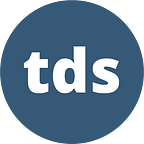The Ins and Outs of Retrieval-Augmented Generation (RAG)
When accessible large language models first came on the scene, the excitement was impossible to miss: beyond their sheer novelty, they came with the promise to completely transform numerous fields and lines of work.
Almost a year after the launch of ChatGPT, we’re far more aware of LLMs’ limitations, and of the challenges we face when we try to integrate them into real-world products. We’ve also, by now, come up with powerful strategies to complement and enhance LLMs’ potential; among these, retrieval-augmented generation (RAG) has emerged as—arguably—the most prominent. It gives practitioners the power to connect pre-trained models to external, up-to-date information sources that can generate more accurate and more useful outputs.
This week, we’ve gathered a potent lineup of articles that explain the intricacies and practical considerations of working with RAG. Whether you’re deep in the ML trenches or approaching the topic from the perspective of a data scientist or product manager, gaining a deeper familiarity with this approach can help you prepare for whatever the future of AI tools brings. Let’s jump right in!
- Add Your Own Data to an LLM Using Retrieval-Augmented Generation (RAG)
For a beginner-friendly introduction to the topic, Beatriz Stollnitz’s recent deep dive is a terrific resource to visit and bookmark for future reference. It goes through the theoretical foundations of RAG before transitioning to a hands-on basic implementation, showing how you can create a chatbot to help customers find information about the products a company sells. - 10 Ways to Improve the Performance of Retrieval Augmented Generation Systems
If you’ve already started tinkering with RAG in your projects, you’ve likely observed that setting it up is one thing, but making it work consistently and produce the intended results is another: “RAG is easy to prototype, but very hard to productionize.” Matt Ambrogi’s guide provides pragmatic insights on bridging the gap between the framework’s potential and more tangible benefits.
- RAG vs Finetuning — Which Is the Best Tool to Boost Your LLM Application?
There are more than a few alternatives to RAG when it comes to building better AI products. Heiko Hotz offers a nuanced and thorough comparison of RAG and model fine-tuning, another prominent strategy for upgrading the performance of generic LLMs. Ultimately, as Heiko eloquently puts it, “There is no one-size-fits-all solution; success lies in aligning the optimisation method with the specific requirements of the task.”
For other excellent reads on topics ranging from counterfactual insights to dynamic pricing, we hope you explore some of our other recent highlights:
- If you’d like to test out the power of the ChatGPT API, Mariya Mansurova shares an introductory guide to using it for topic modeling.
- Looking to brush up on your programming skills? Marcin Kozak’s hands-on tutorial tackles NaN (not-a-number) values in Python and how to use them properly.
- Reza Bagheri is back with one of his trademark deep dives, this time covering the mathematical underpinnings of dimensionality (and the notorious “curse” thereof) in great detail.
- To learn about counterfactuals and their place within data analysis, don’t miss Maham Haroon’s clear and accessible explainer.
- Why are so many businesses jumping on the generative-AI bandwagon even in the absence of a well-defined business goal? Stephanie Kirmer digs into an emerging conundrum.
- After unpacking the potential of using a reinforcement-learning approach to dynamic pricing, Massimiliano Costacurta weighs the benefits of adding context to a multi-armed bandits solution.
- In a fun project walkthrough, Caroline Arnold shows how you can leverage pre-trained models and reanalysis data to create a custom AI weather-forecast app.
Thank you for supporting our authors’ work! If you enjoy the articles you read on TDS, consider becoming a Medium member — it unlocks our entire archive (and every other post on Medium, too).
